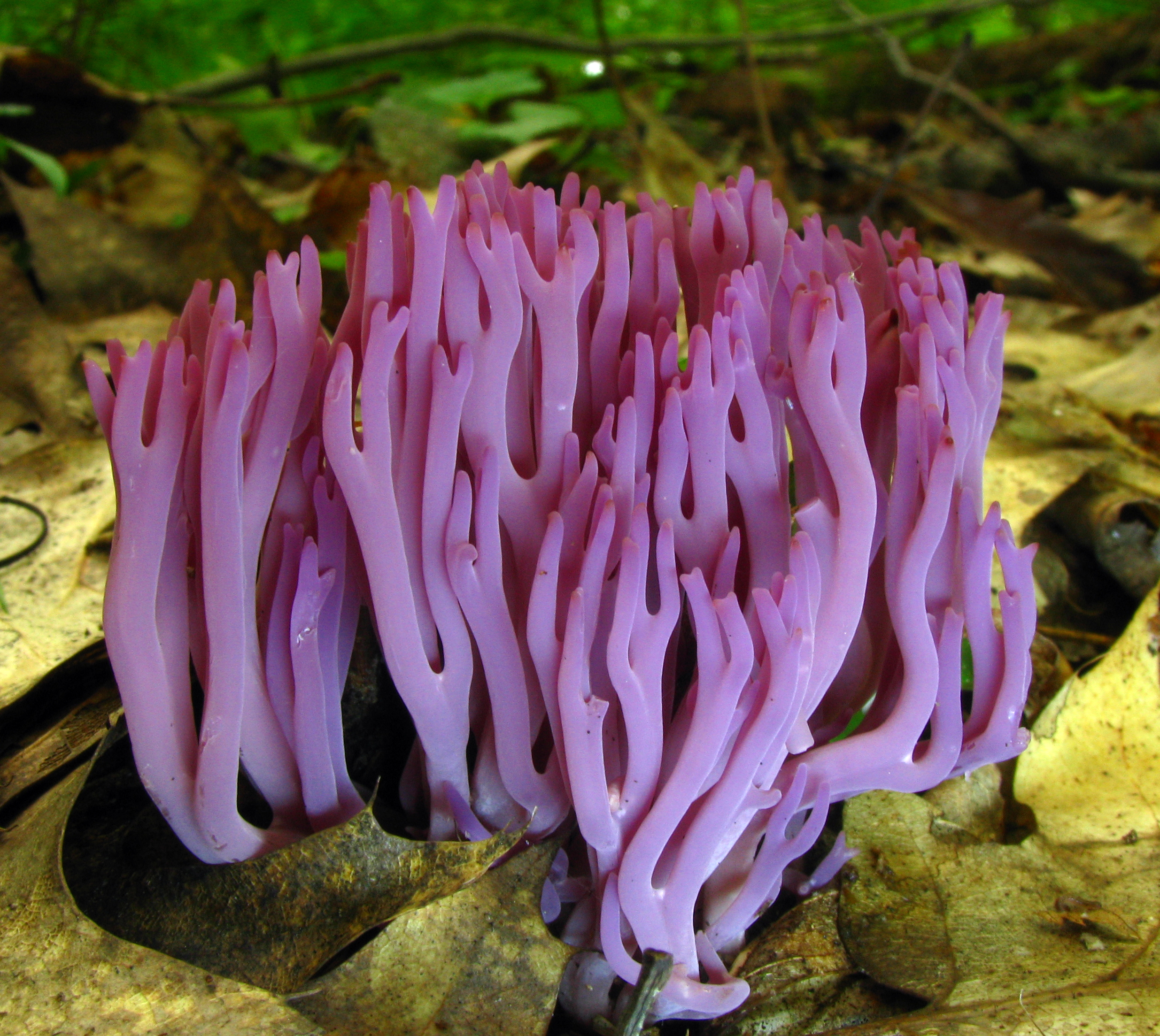|
Feathercamp
Feathercamp is a wildland in the George Washington and Jefferson National Forests of western Virginia that has been recognized by the Wilderness Society as a special place worthy of protection from logging and road construction. The Wilderness Society has designated the area as a "Mountain Treasure".Virginia's Mountain Treasures, report issued by The Wilderness Society, May, 1999 One of the largest interior spaces in the Mount Rogers National Recreation area, Feathercamp offers a more primitive recreation than the Mount Rogers High Country. Trails include the Appalachian Trail, the Iron Mountain Trail and Feathercamp Branch. The area is part of the ''Mount Rogers Cluster''. Location and access The area is located in the Appalachian Mountains of Southwestern Virginia about 2.4 miles northeast of Damascus, Virginia between USFS Rd 90 on the east, US 58 on the south, and Va 605 on the west. It lies on the southwest side of the Shaw Gap wild area. The Appalachian Trail extends ... [...More Info...] [...Related Items...] OR: [Wikipedia] [Google] [Baidu] |
Shaw Gap
Shaw Gap is a wildland in the George Washington and Jefferson National Forests of western Virginia that has been recognized by the Wilderness Society as a special place worthy of protection from logging and road construction. The Wilderness Society has designated the area as a "Mountain Treasure".Virginia's Mountain Treasures, report issued by The Wilderness Society, May, 1999 The Iron Mountain Trail, passing through the center of the area along Iron Mountain, was once the site of the Appalachian Trail and, consequently, received protection not found on other trails. Older trees are found along many sections of the trail. The area has plentiful wildlife, and the site of an old homestead is still visible. The forest service classifies a large section of the area as having unspoiled scenic beauty. The area is part of the ''Mount Rogers Cluster''. Location and access The area is located in the Appalachian Mountains The Appalachian Mountains, often called the Appalachians, ... [...More Info...] [...Related Items...] OR: [Wikipedia] [Google] [Baidu] |
Mount Rogers Cluster
The Mount Rogers Cluster is a region recognized by The Wilderness Society for its unique high elevation mountains, vistas, trout streams and wildlife habitat. The heart of the region is Mount Rogers, the highest mountain in Virginia. The area extends over the Mount Rogers National Recreation Area and into part of the Cherokee National Forest.Virginia's Mountain Treasures, report issued by The Wilderness Society, May, 1999 With elevations above 5000 feet, the area is unlike any other in Virginia. The high elevations have a Canadian-type climate with a spruce-fir remnant forest and high timbered ridges opening to grassy alpine meadows similar to The Montana Big Sky country. Many trails offer a summer escape from nearby humid lowlands. Description The Mount Rogers Wilderness Cluster contains wilderness areas, a National Scenic Area and wildlands recognized by the Wilderness Society as "Mountain Treasures", areas that are worthy of protection from logging and road construction ... [...More Info...] [...Related Items...] OR: [Wikipedia] [Google] [Baidu] |
George Washington And Jefferson National Forests
The George Washington and Jefferson National Forests is an administrative entity combining two U.S. National Forests into one of the largest areas of public land in the Eastern United States. The forests cover of land in the Appalachian Mountains of Virginia, West Virginia, and Kentucky. Approximately of the forest are remote and undeveloped and have been designated as wilderness areas, which prohibits future development. History George Washington National Forest was established on May 16, 1918, as the Shenandoah National Forest. The forest was renamed after the first President on June 28, 1932. Natural Bridge National Forest was added on July 22, 1933. Jefferson National Forest was formed on April 21, 1936, by combining portions of the Unaka and George Washington National Forests with other land. In 1995, the George Washington and Jefferson National Forests were administratively combined. The border between the two forests roughly follows the James River. The combine ... [...More Info...] [...Related Items...] OR: [Wikipedia] [Google] [Baidu] |
The Wilderness Society (United States)
The Wilderness Society is an American non-profit land conservation organization that is dedicated to protecting natural areas and federal public lands in the United States. They advocate for the designation of federal wilderness areas and other protective designations, such as for national monuments. They support balanced uses of public lands, and advocate for federal politicians to enact various land conservation and balanced land use proposals. The Wilderness Society also engages in a number of ancillary activities, including education and outreach, and hosts one of the most valuable collections of Ansel Adams photographs at their headquarters in Washington, D.C. The Wilderness Society specializes in issues involving lands under the management of federal agencies; such lands include national parks, national forests, national wildlife refuges, and areas overseen by the Bureau of Land Management. In the early 21st century, the society has been active in fighting recent politic ... [...More Info...] [...Related Items...] OR: [Wikipedia] [Google] [Baidu] |
Appalachian Mountains
The Appalachian Mountains, often called the Appalachians, (french: Appalaches), are a system of mountains in eastern to northeastern North America. The Appalachians first formed roughly 480 million years ago during the Ordovician Period. They once reached elevations similar to those of the Alps and the Rocky Mountains before experiencing natural erosion. The Appalachian chain is a barrier to east–west travel, as it forms a series of alternating ridgelines and valleys oriented in opposition to most highways and railroads running east–west. Definitions vary on the precise boundaries of the Appalachians. The United States Geological Survey (USGS) defines the ''Appalachian Highlands'' physiographic division as consisting of 13 provinces: the Atlantic Coast Uplands, Eastern Newfoundland Atlantic, Maritime Acadian Highlands, Maritime Plain, Notre Dame and Mégantic Mountains, Western Newfoundland Mountains, Piedmont, Blue Ridge, Valley and Ridge, St. Lawrence Valley, Appalac ... [...More Info...] [...Related Items...] OR: [Wikipedia] [Google] [Baidu] |
Damascus, Virginia
Damascus is a town in Washington County, Virginia, United States. The population was 814 at the 2010 census. It is part of the Kingsport– Bristol (TN)– Bristol (VA) Metropolitan Statistical Area, which is a component of the Johnson City–Kingsport–Bristol, TN-VA Combined Statistical Area (commonly known as the " Tri-Cities" region). Festivals Damascus is the home of the annual Trail Days festival and is known as Trail Town USA due to the convergence of four scenic trails in the town, including the Appalachian Trail, U.S. Bicycle Route 76, The Iron Mountain Trail, and the Virginia Creeper Trail. Damascus also is on the route of the Daniel Boone Heritage Trail and the Crooked Road Music Heritage Trail. The Trail Days festival is held around the middle of May each year and draws in excess of 20,000 tourists, making it the largest single gathering of Appalachian Trail Hikers anywhere. During the festival's Hikers Parade on May 18, 2013, up to 60 people w ... [...More Info...] [...Related Items...] OR: [Wikipedia] [Google] [Baidu] |
United States Geological Survey
The United States Geological Survey (USGS), formerly simply known as the Geological Survey, is a scientific agency of the United States government. The scientists of the USGS study the landscape of the United States, its natural resources, and the natural hazards that threaten it. The organization's work spans the disciplines of biology, geography, geology, and hydrology. The USGS is a fact-finding research organization with no regulatory responsibility. The agency was founded on March 3, 1879. The USGS is a bureau of the United States Department of the Interior; it is that department's sole scientific agency. The USGS employs approximately 8,670 people and is headquartered in Reston, Virginia. The USGS also has major offices near Lakewood, Colorado, at the Denver Federal Center, and Menlo Park, California. The current motto of the USGS, in use since August 1997, is "science for a changing world". The agency's previous slogan, adopted on the occasion of its hundredt ... [...More Info...] [...Related Items...] OR: [Wikipedia] [Google] [Baidu] |
Chanterelle
Chanterelle is the common name of several species of fungi in the genera '' Cantharellus'', '' Craterellus'', '' Gomphus'', and ''Polyozellus''. They are among the most popular of wild edible mushrooms. They are orange, yellow or white, meaty and funnel-shaped. On the lower surface, underneath the smooth cap, most species have rounded, forked folds that run almost all the way down the stipe, which tapers down seamlessly from the cap. Many species emit a fruity aroma, reminiscent of apricots, and often have a mildly peppery taste (hence its German name, '' Pfifferling''). The name chanterelle originates from the Greek '' kantharos'' meaning "tankard" or "cup", a reference to their general shape. Description At one time, all yellow or golden chanterelles in western North America had been classified as '' Cantharellus cibarius''. Using DNA analysis, they have since been shown to be a group of related species. In 1997, the Pacific golden chanterelle ('' C. formosus'') and ''C. ci ... [...More Info...] [...Related Items...] OR: [Wikipedia] [Google] [Baidu] |
Amanita Caesarea
''Amanita caesarea'', commonly known as Caesar's mushroom, is a highly regarded edible mushroom in the genus ''Amanita'', native to southern Europe and North Africa. While it was first described by Giovanni Antonio Scopoli in 1772, this mushroom was a known favorite of early rulers of the Roman Empire. It has a distinctive orange cap, yellow gills and stipe. Organic acids have been isolated from this species. Similar orange-capped species occur in North America and India. It was known to and valued by the Ancient Romans, who called it ''Boletus'', a name now applied to a very different type of fungus. Although it is edible, the Caesar's mushroom is closely related to the psychoactive fly agaric, and to the deadly poisonous death cap and destroying angels. Taxonomy and naming ''Amanita caesarea'' was first described by Italian mycologist Giovanni Antonio Scopoli in 1772 as ''Agaricus caesareus'', before later being placed in ''Amanita'' by Persoon in 1801. The common n ... [...More Info...] [...Related Items...] OR: [Wikipedia] [Google] [Baidu] |
Clavarioid Fungi
The clavarioid fungi are a group of fungi in the ''Basidiomycota'' typically having erect, simple or branched basidiocarps (fruit bodies) that are formed on the ground, on decaying vegetation, or on dead wood. They are colloquially called club fungi and coral fungi. Originally such fungi were referred to the genus ''Clavaria'' ("clavarioid" means ''Clavaria''-like), but it is now known that clavarioid species are not all closely related. Since they are often studied as a group, it is convenient to retain the informal (non-taxonomic) name of "clavarioid fungi" and this term is frequently used in research papers. History ''Clavaria'' was one of the original genera created by Linnaeus in his ''Species Plantarum'' of 1753. It contained all species of fungi with erect, club-shaped or branched (coral-like) fruit bodies, including many that are now referred to the Ascomycota. Subsequent authors described over 1200 species in the genus. With increasing use of the microscope in the late ni ... [...More Info...] [...Related Items...] OR: [Wikipedia] [Google] [Baidu] |
Calocybe Indica
''Calocybe indica'', commonly known as the milky white mushroom, is a species of edible mushroom native to India. The sturdy all-white mushrooms appear in summer after rainfall in fields and on road verges. Traditionally eaten in West Bengal, it is being grown commercially in several Indian states and other tropical countries. Taxonomy ''Calocybe indica'' was formally described in 1974, from material collected in Calcutta. The authors—botanists R.P. Purkayastha and Aindrila Chandra—had noted it to be a popular mushroom in markets in West Bengal. They placed it in the section ''Calocybe'' of the genus ''Calocybe'', noting that it appeared closely related to and was similar morphologically to ''Calocybe gambosa'', from which it differed by having slightly larger oval spores, and a stouter mushroom. Botanist A. S. Krishnamoorthy found it growing in Tamil Nadu in the mid 1990s, and its commercial production was overhauled and improved. Description The robust mushroom is all-white ... [...More Info...] [...Related Items...] OR: [Wikipedia] [Google] [Baidu] |







